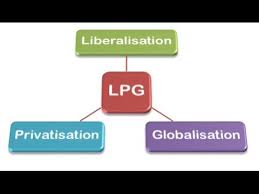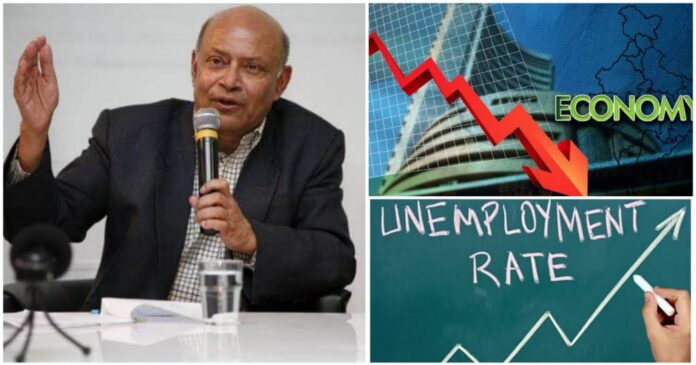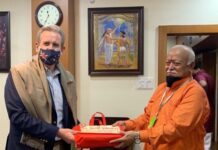During the period of high growth in Indian GDP from the early 1990s to about 2012, I was often reminded of a story I had heard in Mexico about one of the many military dictators ruling then at the mercy of the CIA in Latin America after the right-wing take over in Chile (1973). During one of his regular reporting trips to the U.S, he was asked by the U.S president about the situation in his country. His reply was: “The economy is doing well, but not the people.” This remark more or less also sums up the high growth phase of the Indian economy. During the years of high growth when Indian GDP grew at double the world average at more than seven percent, regular employment grew by slightly less than one percent even according to official statistics. In the pre-liberalization (pre-1991) period output growth on average at about half that rate (3.5-4) percent but employment grew at 2 percent, double the average of the liberalization phase.

Output growth has increasingly got delinked from employment growth post liberalization because, output per employed worker goes up sharply due to mechanization, and the type of industrialization that kills far more livelihoods of the rural poor than jobs created to absorb workers in the organized industry. An obsessive preoccupation with international competitiveness under globalization drove these compulsions. Thus output rises while the number of employed falls, as happened in many large corporations during this phase. Liberalization of trade and foreign exchange regulation provided easy access to foreign goods which made the middle class happy, and dismantling of many suffocating regulations of a ‘police –inspector raj’ was welcomed by both business and the people. The industrialists were happier because liberalization put them effectively in charge of industrialization; it gave them incentives with almost free gifts of land, water bodies, rivers, mountains, forests, and seashore by killing the livelihoods of millions, a disproportionately high proportion of them were Adivasis and Dalits. My personal rough calculation suggests that the probability of being displaced was nearly three times higher for them. Nevertheless, the big private corporate sector performed by raising economic growth while the media cheered. Only it was seldom mentioned that the gap between the rich and the poor grew wider, while experts continued to debate whether extreme poverty had really decreased significantly.
And now, the economy is on a downward spiral with no end in sight. Even the government no longer has the courage to say that the economy is doing well; the best it can do instead is to suppress or manufacture official numbers hoping it will soften the blow through paid news. The poor, many of them daily earners in the informal sector were first dazed by the shock of demonetization that hit them suddenly. The earning dropped, purchasing power suddenly evaporated from the market. The comforting claim of the annihilation of ‘black money’ through demonetization coupled with an earlier election promise to put fifteen lakhs in the bank account of each Indian with the recovered black money did not take long to sound like a cruel joke.

So the home minister assured it was an election joke, not a promise! Other similar jokes continue to follow with an unending series of announcements every second day about the great things the government is doing for the poor. Indeed such promises have become the hallmark of this government. Reporters who question it on the basis of ground-level reporting are entirely out of favour, suspected anti-nationals going against the grand narrative of nation-building based on promises not to be kept. For example, the particular one who investigated into the dismal results of the promise of doubling of farmers’ income soon lost his job. Journalists like the rest of us are not meant to be heroes but reasonably honest. This is increasingly difficult, so it did not take most of them long to learn which side of their bread is buttered. And, a lot of butter is offered by the government and the corporations who own most of the media provided the news channel falls in line. This means for example loud commitment repeating uncritically official versions of threats to our nationalism from China, Pakistan, unban Naxals even JNU students, the anti-CAA protesters, in short everybody who dissents. At the same time, the obedient news channel needs to emphasize the singular importance of ram mandir for national harmony and, of Rafael jets for national defense, and omit inconvenient news about growing unemployment, fleecing of the nationalized banks by a handful of borrowers, environmental degradation willfully caused to help contractors and industrialists. Most of our media have been excellent learners, mastering the sins of both commission and omission.
The central government was far too busy with entertaining Trump, amending citizenship law, and subverting opposition governments in states until late March in 2019 while the monster of a pandemic was knocking at the door. Except for Kerala, no other state paid attention.
Then came the sudden announcement of a severe lockdown with just four hours notice just like with the earlier demonetization exercise. Like promises galore not meant to be kept, this abruptness too is the style of the government that rules us.

The suddenness of the lockdown left the economy reeling. It is no longer a question of slower growth, not even of no growth but how deep the economy would fall. The so-called migrant workers were its first visible victims. The total number of regular jobs in the organized part of the economy has begun to decline rapidly. The latest unemployment figures suggest for the first time huge reduction in regular salaried jobs. This will hit middle class the hardest. While huge and rising unemployment, open and disguised, stares the poor in the face as never before, there are some curious statistics to show some jobs are coming back in the informal and semi-formal economy of small and middle enterprises with the easing of the lockdown. The simplest explanations are usually the last one you hear from learned experts. The small enterprises that have run through all their savings during the lockdown cannot afford to remain closed; the daily workers cannot survive without their daily attempt at earning something in odd jobs. The poor cannot afford to be unemployed, that’s why the unemployment figures are absurdly low for that category. I recall Indian data where the least educated landless have the lowest unemployment rate, while those with the education level of class 12 and above have the highest rate of unemployment, exactly the opposite of say America. The reason in India is simply because the more educated are usually from higher income groups, and can wait longer in search of acceptable employment. The really poor cannot afford to be unemployed. If detailed data ever becomes available, it might even show them to be time-wise even more employed, but income-wise less employed with dramatically lower earnings per hour.
And yet, liberalization is the name of the game. Indeed it is the only game in town this government wants to continue to play by giving unstinted support to big industrialists. No matter lockdown or pandemic, it changes labor and environmental laws to help the industry. It gave them tax break in terms of foregone government revenue which is almost double the money it spends today on MGNREGA. It turns a forgiving eye to the known looters of bank money. You had heard about black money from the prime minister, did you hear him ever being specific about what ails Indian banking? Why is the media which can speculate so freely about an actor’s suicide, terrorist connections of social activists remain so silent about the 28 known names that have surfaced who cheated nationalized banks of ten lakh crores (27 of them from Gujrat, except Vijay Mallya)?
The Indian economy is in a desperate situation as never before. The government could have started on a rescue package long ago even if its by injecting half the amount of money looted from banks and advancing it to the poor and unemployed to revive demand at a time when our stock of grains is high and agricultural production has been good, and fear of inflation propelled rising food price is remote. There is no need to detail such a package here, because it is sadly irrelevant.
The government is not interested in the economy. Instead, the government is interested in protecting and augmenting the fortune of its selected group of industrialist friends who in turn would help it in times of election. The stock market is more important than the economy of the vast majority. Do not fool yourself that this government is less clever; that the government does not understand what needs to be done. Instead face the fact that it wants this to be only a game of give and take between it and its selected industrialist friends in the would-be Hindu Rashtra. Only, if it has its way.
More from the Author: Unemployment : What Could Be Done But Would Not Be Done
Prof. Bhaduri is currently teaching at Pavia University, Italy. He is a visiting professor at the Council for Social Development, Delhi University.



























